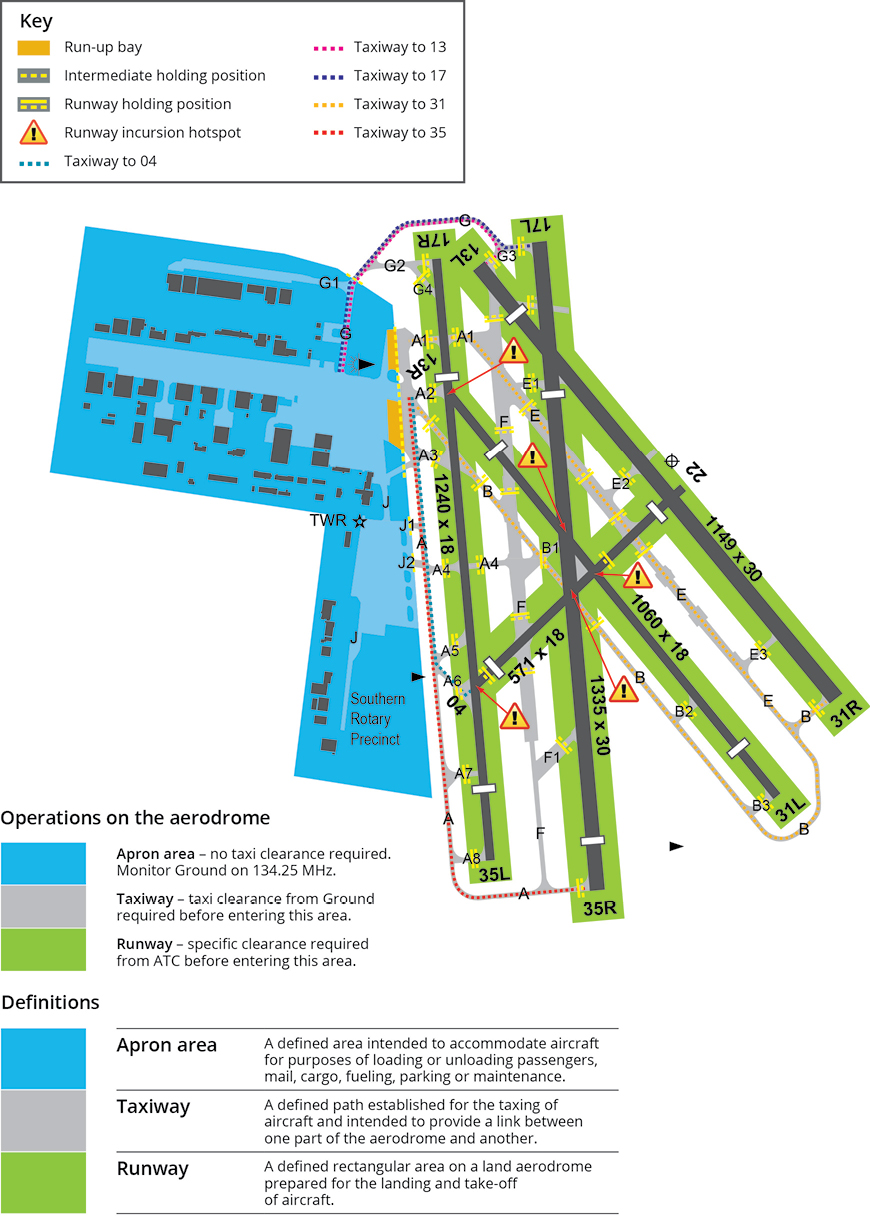Helicopter arrivals and departures use the southern or northern aiming point or prior approved HLS. Helicopters must nominate aiming point or HLS on first contact with tower. Departures and arrivals must be parallel to the duty runway and comply with circuit direction. All arrivals, departures and circuits must be at 700 ft AMSL unless notified otherwise. Do not fly over any airport buildings or public viewing areas at less than 500 ft.
When operating in Class G airspace outside of the Moorabbin control zone, ATC may not be aware of all traffic or may be busy managing traffic in Class D airspace. A high level of situational awareness is important. Helicopters typically maintain 700 ft in this area.
There is a no-go area to the west of the tower which is a public viewing area. Therefore, outbound helicopter traffic usually departs the southern pad to the east of the tower and proceeds overhead the taxiway before departing the zone.
There are 2 helicopter landing sites (HLS) at Moorabbin – uncontrolled taxiway G1 for the north and the grass area abeam the helicopter hangars for the south. The northern HLS is quite close to the approach threshold for runways 17L and 17R. Therefore, approaches to the northern HLS, when runways 17 are in operation, require a unique set of instructions from ATC (most likely a close, right-hand circuit) to avoid conflict with the fixed-wing traffic. When runway 31L/13R in use, helicopters will be sequenced into taxiway G1.
Departures
Moorabbin has no specific outbound tracks for helicopters. If city-bound, expect an on-track departure or via a leg of the circuit. Note: this may mean two-way traffic for helicopters, at the same level.
Departing to the southern training area is usually outbound via a leg of the circuit. Exit the zone at 700 ft then track to the sewage treatment works.
If outbound to the north or east, depart via the appropriate leg of the circuit (often a crosswind leg). A helicopter is very rarely given the instruction to depart on the upwind leg. From here, a typical clearance is via Sandown and then out of Class D airspace to the north or east, as required. If outbound to the south, departure will usually be via the coast.
- taxi for the either the southern aiming point and hold short of TWY A or the northern aiming point and hold short of TWY G
- for departures to the east, call TWR on 118.1 when ready
- for departures to the west, call TWR on 123.0 when ready, and either pass east of the TWR and track north until past the TWR or track south until past airport buildings.
Arrivals:
- from the east, must call TWR on 118.1 and fly a close base leg to pass over the duty threshold not below 500 ft AMSL
- from the west, must remain clear of duty runways
- from the south, track east of the TWR, then descend to the southern HLS
- from the north, track east of the TWR and descend to the northern or main aprons.
Circuits:
- are conducted from either the eastern grass (duty RWY 17/35) or the western triangle (duty RWY 13/31)
- are flown parallel to the duty RWY, inside the fixed-wing circuit and in compliance with the fixed-wing circuit direction
- once established, the only radio call is ‘airborne’ before each circuit. ATC will not positively control take-off and landing for helicopter circuit ops or provide sequencing.


